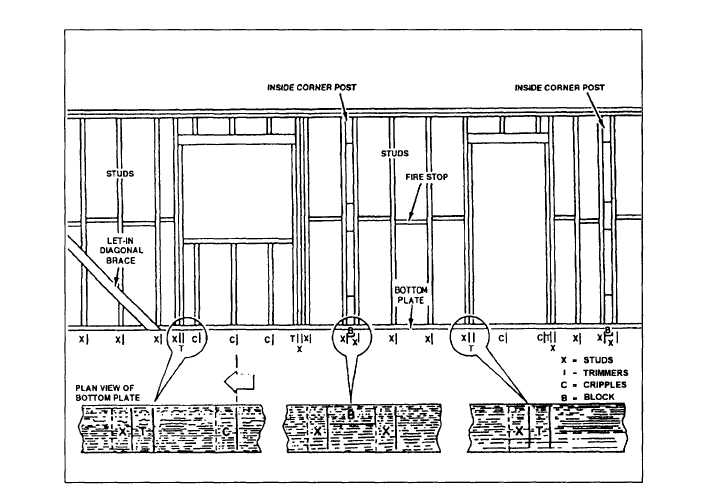Figure 1-37.—Fire blocking.
Cut-in bracing (fig. 1-36) is another type of diagonal
bracing. It usually consists of 2 by 4s cut at an angle and
toenailed between studs at a diagonal from the top of a
corner post down to the soleplate.
Diagonal sheathing (fg. 1-36) is the strongest type
of diagonal bracing. Each board acts as a brace for the
wall. When plywood or other panel sheathing is used,
other methods of bracing maybe omitted.
Fire stops
Most local building codes require fire stops (also
known as fire blocks) in walls over 8 foot 1 inch high.
Fire stops slow down fire travel inside walls. They can
be nailed between the studs before or after the wall is
raised. Fire stops can be nailed in a straight line or
staggered for easier nailing. Figure 1-37 shows a section
of a framed wall with fire stops.
It is not necessary to nail fire stops at the midpoint
of the wall. They can be positioned to provide additional
backing for nailing the edges of drywall or plywood.
CONSTRUCTION
All major components of a wall should be cut before
assembly. By reading the blueprints, you can determine
the number of pieces and lengths of all components. The
different parts of the wall are then assembled. Any hard,
level surface can be used for assembly. After completing
nailing, raise the walls in place for securing.
Two layout procedures are used in wall layout:
horizontal plate and vertical layout. In horizontal plate
layout, the location of the wall is determined from the
dimensions found in the floor plan of the blueprints. For
vertical layout, the dimension can be found in the
sectional views of the building’s blueprints.
1-21

